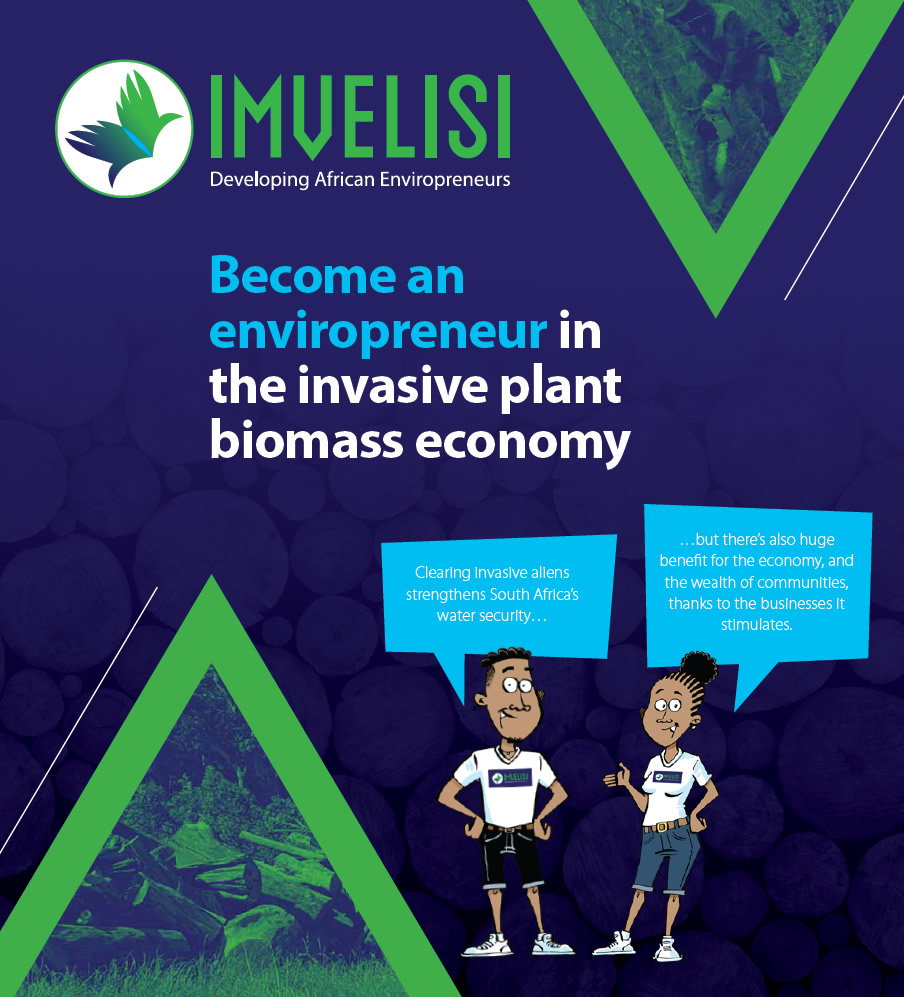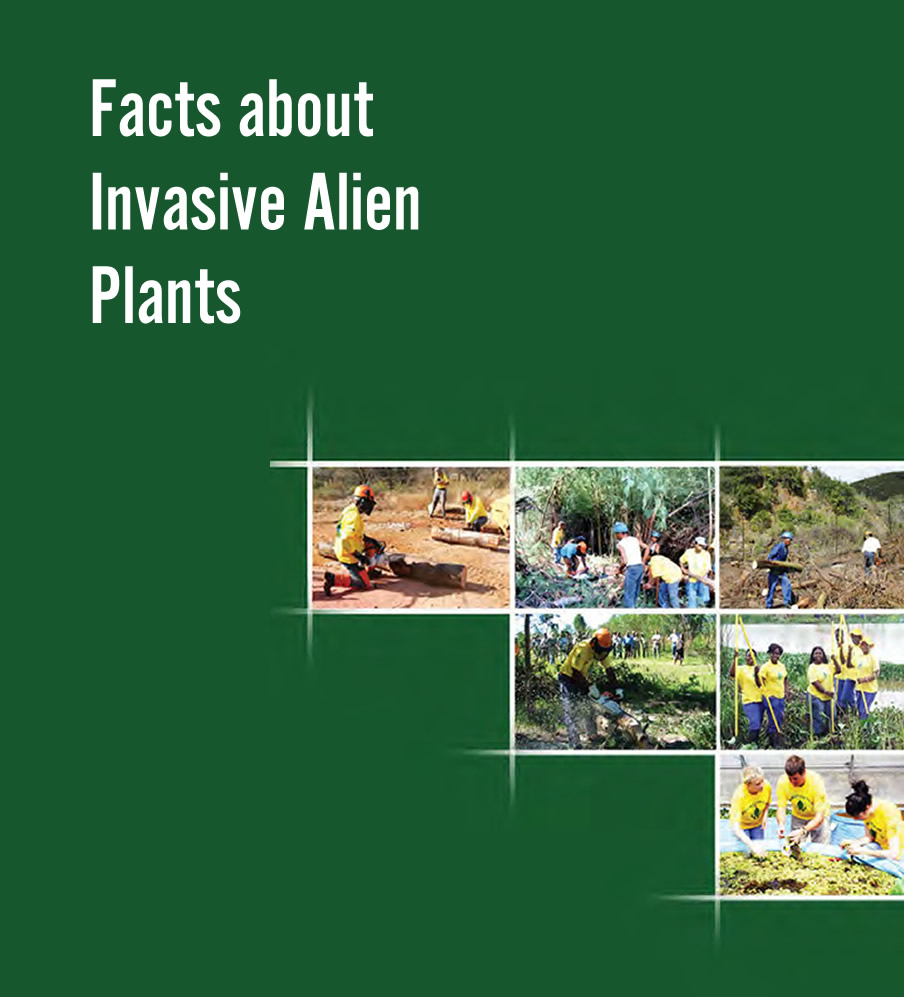
GREEN BUSINESS VALUE CHAINS
HOW DOES AN ENVIROPRENEUR START A BUSINESS BASED ON HARVESTED INVASIVE BIOMASS?
The DFFE contracts 3 000 – 4 000 small, medium and micro enterprises (SMMEs) to undertake invasive clearing. Clear to Grow, a national initiative funded by DFFE (and with some contribution from the private sector), aims to develop the capacity of 120 micro enterprises to engage with commercially-orientated value chains associated with invasive alien plant clearing, harvesting and beneficiation activities.
In a Clear to Grow report, author David J. Gardner explains how the initiative aims to reduce invasive alien plant species, boost local economic development, replenish water table levels and grassland environments, create micro industries, and provide entrepreneurial development.

WHAT ARE ALIEN AND INVASIVE SPECIES?
South Africa is the 30th driest country in the world and has less water per person than countries widely considered much drier, such as Namibia and Botswana (NWRS, 2013). As we have a limited quantity of available freshwater resources in South Africa we need to be especially careful with how we manage and utilise these resources.
Invasive alien plants such as water hyacinth affect the capacity of dams and rivers in terms of water storage. Invasive alien plants also need much more water than indigenous trees for growth and may affect groundwater levels.
The meaning of the words "alien" and “invasive species” is that they are animals, plants or other small creatures which are introduced by man to a place that is NOT their natural home and so they make their home in this new place where they cause damage to other animals, plants or other small creatures. NB: It is important to recognise that not all alien species are invasive.
Facts about alien and invasive species:
Alien and invasive species regulation, categories and permits [PDF - 1.4 mb]
Alien and invasive aquatic plants [PDF - 2 mb]
Plant me instead! [PDF - 503,1 kb]

